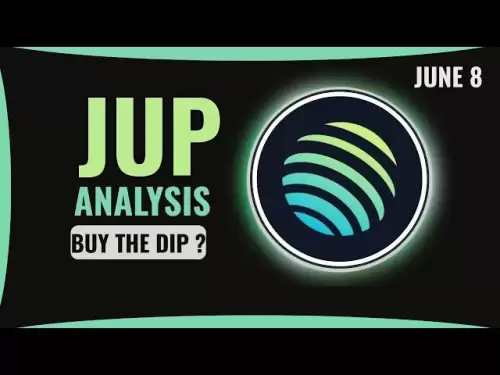 |
|
 |
|
 |
|
 |
|
 |
|
 |
|
 |
|
 |
|
 |
|
 |
|
 |
|
 |
|
 |
|
 |
|
 |
|
암호화폐 뉴스 기사
Layer-2 Blockchain Base Leads the Pack in New Smart Contract Deployments
2025/05/06 17:04

In a fresh perspective on weekly developer activity across major blockchain networks, interesting shifts in deployment dynamics have come to light.
Taking a snapshot of April 27 to May 3, the team at development analytics platform, DCentral, has revealed that while layer-2 blockchain Base continues to spearhead the deployment of new smart contracts, it has also shown Ethereum and some key layer-2 chains, like Optimism and Polygon, to be displaying positive momentum in deployment activity. Meanwhile, standout performances from prominent chains like BNB Chain and Arbitrum have started to show signs of flattening out.
At the pinnacle of the leaderboard, Base—a Layer-2 blockchain incubated by Coinbase—remains firmly in command with 6.9 million new contract addresses generated over the past week. That figure also reflects a sharp 37.81% week-over-week decline, however, which seems to signal a cooling off from the platform’s previously explosive growth in developer activity.
Even though Base’s numbers are decreasing, they are still far and above what anyone else is doing. When you look at what Base is doing in 2024, it is basically an experimentation hub. That is, it is an experimentation hub—
It’s also possible that the drop is a signal that developers are moving on from the initial, somewhat speculative phase of experimenting with dApps to a new phase where they refine and maintain the dApps they’ve already deployed. Maybe we’re entering an era of dApp stability, in which the basic functions of the dApps we have become all the more essential since they seem so hard to replace or replicate.
While Base encountered a slowdown, Ethereum showed signs of resilience, registering 588,000 new smart contract addresses—an 11.69% increase week-over-week. As the most mature and secure smart contract platform, Ethereum continues to be a reliable foundation for both legacy protocols and newer entrants looking to deploy mission-critical applications. This week’s uptick suggests that despite congestion concerns and higher transaction fees, Ethereum remains a core destination for serious builders.
The layer-2 networks, Optimism and Polygon, also had strong weeks, with 416,000 (+43.17%) and 415,000 (+31.23%) new contract addresses, respectively. These numbers reflect a revived developer interest in scalable, cost-effective alternatives to the Ethereum mainnet, especially as more projects line up to use the supposed advantages of layer-2 solutions: faster transaction throughput, lower gas fees, and no perceived compromises on security.
Optimism’s growth spurt may also be due to its adopting ever more of the OP Stack, which helps developers launch their own customizable chains. Not only are Optimism and its growing ecosystem working to solve the immediate problems of blockchain technology, but they’re also setting out, in true Optimistic style, to realize a future where these problems evaporate.
Ethereum, Optimism, and Polygon were the only three big chains that saw real growth in developer activity last week—a trend that seems to suggest a more consolidated development across trusted and mature networks.
Every chain of block is a stretch and shows great strength in what it is capable of presenting. Yet not all of them have an impressive sufficiency. BNB Chain has been the most declined over these past 7 days. It only made a poor showing of 172,000 new smart contract addresses last week—a declination of 63.67% from the week before.
Now, when you look at it like that, you might think, “Wow, that’s a huge drop-off.” And it is. But part of that is due to BNB Chain having what I call a “reach issue.” Compared to last week, BNB Chain seems to have even less reach into the developer community.
On the same note, Arbitrum, an Ethereum Layer-2, recorded only 59,000 new contract addresses—a 33.06% decrease. Even with a sturdy DeFi ecosystem, Arbitrum’s recent downturn may speak more to the chain’s inability to keep users engaged beyond big token launches and incentive-driven activities. In list form: Simultaneously, Arbitrum, another Ethereum Layer-2, noted just 59,000 addresses for new contracts—a 33.06% drop. Despite a strong DeFi ecosystem, the recent downturn for Arbitrum might reflect a lack of user engagement outside major token launches and incentive-driven activities.
Sonium and Tron also reported double-digit percentage drops in contract creation, declining by 20.98% and 22.35%, respectively. These two numbers hint at something broader than just a slowdown in contract creation on these two chains. They suggest that developer behavior is rebalancing across the ecosystem. Some of the formerly high-activity chains might be entering slower growth phases
부인 성명:info@kdj.com
제공된 정보는 거래 조언이 아닙니다. kdj.com은 이 기사에 제공된 정보를 기반으로 이루어진 투자에 대해 어떠한 책임도 지지 않습니다. 암호화폐는 변동성이 매우 높으므로 철저한 조사 후 신중하게 투자하는 것이 좋습니다!
본 웹사이트에 사용된 내용이 귀하의 저작권을 침해한다고 판단되는 경우, 즉시 당사(info@kdj.com)로 연락주시면 즉시 삭제하도록 하겠습니다.
-

-

-

-

-

-

-

-
![A Decision on the Litecoin [LTC] ETF Application by Canary Capital is Due by Monday, 05 May A Decision on the Litecoin [LTC] ETF Application by Canary Capital is Due by Monday, 05 May](/assets/pc/images/moren/280_160.png)
-

- VIT-AP University sets a milestone with the grand inauguration of the Mahatma Gandhi Academic Block, India's Tallest Academic Block
- 2025-06-08 20:35:13
- The Mahatma Gandhi Academic Block, standing 45 meters tall and spanning 7.68 lakh square feet is a testament to modern architectural and educational innovation.





























































![A Decision on the Litecoin [LTC] ETF Application by Canary Capital is Due by Monday, 05 May A Decision on the Litecoin [LTC] ETF Application by Canary Capital is Due by Monday, 05 May](/uploads/2025/05/06/cryptocurrencies-news/articles/decision-litecoin-ltc-etf-application-canary-capital-monday/image_500_300.webp)
